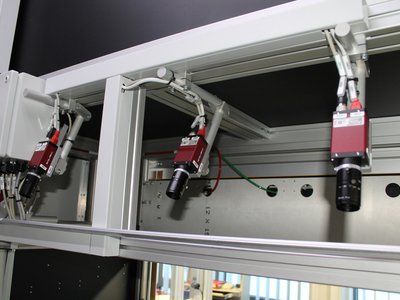Customized End-of-Line Testing for Automotive Door Panels: A Technical Insight
Automotive manufacturers face a unique challenge in balancing customer demands for personalized vehicle interiors with industrial production requirements. The engineers at Ziemann & Urban have developed a specialized testing system that enables comprehensive control over produced car door panels, utilizing advanced cameras to verify interior configurations and ambient lighting features.
The Challenge of Personalization versus Industrial Requirements
Car customization allows customers to select various options such as ambient lighting colors (red or blue), seat materials (cloth or leather), and other functional designs. This level of personalization presents significant challenges for automated inspection systems, which must handle an almost unlimited combination of feature variations without compromising production efficiency.
Industrial requirements have evolved in parallel: manufacturers now demand increased automation speed, higher process quality, and compliance with legal standards like traceability. These demands necessitate comprehensive documentation and visualization of production processes under both industrial and clean room conditions.
Camera Solutions for Varied Inspection Tasks
The 5-megapixel Manta G-504 cameras perform attribute inspection and color recognition tasks, including identifying the colors of leather, seams, contours, clips, rubber plugs, and function buttons. These cameras incorporate a Sony ICX655 CCD sensor with a Type 2/3 image sensor (11.016 mm diagonal), achieving up to 9.2 frames per second at full resolution.
For complex or intricate systems, the compact Mako G-125 camera in its sugar cube-sized housing (60.5 x 29 x 29 mm) provides ultra-compact inspection capabilities.
High-resolution Prosilica GT cameras handle line lighting intensity checks and surface inspections while providing rugged performance for harsh environments with optimized heat dissipation. These cameras offer flexibility through various lens control options to adapt to changing light conditions, supporting resolutions up to 31 megapixels ideal for high-definition imaging applications requiring robustness and design-in flexibility.
Analysis Software and Documentation
Ziemann & Urban’s analysis software applies specialized algorithms to generate visual inspection results that identify defect locations and affected components. Each defective part is automatically listed in a rework protocol, while all analytical data (both graphical representations and raw data) are saved with indexing for complete traceability compliance.
This solution has proven successful across Europe, Asia, and America, enabling manufacturers to maintain zero error rates while reducing costs through automation despite the high individuality of parts. The combination of advanced camera technology, specialized software, and streamlined workflows ensures both quality control and economic efficiency in automotive production.
Note: This article presents technical details from an original source without repetition or explanation as per translation guidelines.
Last Updated: 2025-09-04 16:57:43
